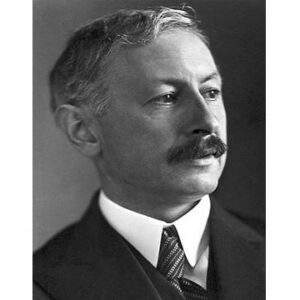Paul Karrer, a Swiss Organic Chemist, won the Nobel Prize in Chemistry in 1937 with Norman Haworth for synthesizing different Vitamins and determining their structural formulae. He also experimented with vegetable dyes. Carotenoids (yellow plant pigments), flavins, Vitamin A, Vitamin B2, and Vitamin K were all created by him. He never drove or had a car, and despite numerous offers from institutions throughout the world, he never considered leaving the University of Zurich, where he graduated, and spent his entire career there.
Childhood and Adolescence
Paul Karrer was born on April 21, 1889, in Moscow, Russia, to Swiss nationals Paul Karrer and Judi Lerch Karrer. Dentist was his father’s profession.
The family returned to Switzerland in 1892, when Karrer attended school in Lenzburg, Aarau.
A Career of Paul Karrer
Paul Karrer earned his Ph.D. in 1911 after studying chemistry at the University of Zurich under Alfred Werner. For another year, he worked as an assistant to his professor.
He began an independent investigation of organic arsenic compounds, and in 1912, he moved to Frankfurt, Germany, to work with Paul Ehrlich, a well-known German drug chemist, and stayed for six years.
He returned to Zurich in 1918 as a reader at the University of Zurich, and in 1919 he was named Professor of Chemistry and Director of the Chemical Institute there.
During the 1920s, he focused his research on plant pigments and natural products. He solved the structures of carotene and lycopene in the 1930s, which had been a riddle for a long time.
Karrer was fascinated by plant colors, and while researching the features of carotenoids, he discovered that one of its varieties, beta-carotene, had a structure that is strikingly similar to that of Vitamin A, commonly known as retinol, which is found in the eye.
Night Blindness is caused by a deficiency in vitamin A. He deduced that beta-carotene is transformed to Vitamin A in animal bodies and proposed its structure in 1930.
Vitamin A (retinol) was created in 1931, Vitamin B2 (riboflavin) was synthesized in 1935, Vitamin E (tocopherol) was synthesized in 1938, and Vitamin K (phytonadione) was synthesized in 1939. His studies also included Vitamin E and the Vitamin B Complex.
Karrer made significant contributions to the knowledge of the structure and function of Nicotine-amide-adenine dinucleotide (NAD), a coenzyme required for electron transmission in the cell’s energy system, in 1942.
He retired in 1959 after completing the complete synthesis of carotenoids in 1950.
Achievements & Awards of Paul Karrer
In 1937, he was awarded the Nobel Prize in Chemistry for his research on carotenoids, flavins, and vitamins A and B2. For his work on Vitamin C and Carbohydrates, he split the prize with Walter Norman Haworth
Universities in Basel, Breslau, Lousanne, Zurich, Lyons, Paris, Sofia, London, Turin, Brussels, Rio de Janeiro, Madrid, and Strasbourg bestowed honorary degrees to Dr. Karrer.
He also received the Marcel Benoist Prize and the Cannizzaro Prize, both prominent honours in the field of chemistry, in addition to the Nobel Prize.
Major Projects of Paul Karrer
His textbook, ‘Lehrbuch der Organischen Chemie,’ was first published in 1927 and has since gone through 13 editions and been translated into seven languages.
Over 1000 research publications on Vitamins A, B2, C, and E, coenzymes, carotenoids and other plant pigments, alkaloids, amino acids, carbohydrates, and organo-arsenic compounds were published during his career.
Karrer was the 14th International Congress on Pure and Applied Chemistry’s president (Zurich, 1955).
He was an honorary member of the Academie des Sciences (Paris), Royal Society (London), National Academy of Science (Washington), Royal Academy of Sciences (Stockholm), Royal Academy of Sciences (Rome), Royal Academy of Belgium, Indian Academy of Science, Royal Netherlands Academy of Sciences, and chemical societies in the United Kingdom, France, Germany, Belgium, India, and Austria.
Personal History and Legacy
In 1914, he married Helena Froelich. They had two boys together.
On June 18, 1971, he died in Zurich at the age of 82. In 1972, his wife passed away.
In 1959, a collection of major firms in this field, including CIBA AG, J. R. Geigy, F. Hoffman la Roche & Co. AG, Sandoz AG, Societe des Produits Nestle AG, and Dr. A. Wander AG, founded the distinguished Paul Karrer Gold Medal in his honor. It is given to an outstanding chemist who gives a lecture at the University of Zurich once a year or twice a year.
Estimated Net worth
Paul is one of the wealthiest chemists and is on the list of the most popular chemists. Paul Karrer’s net worth is estimated to be $1.5 million, according to Wikipedia, Forbes, and Business Insider.


